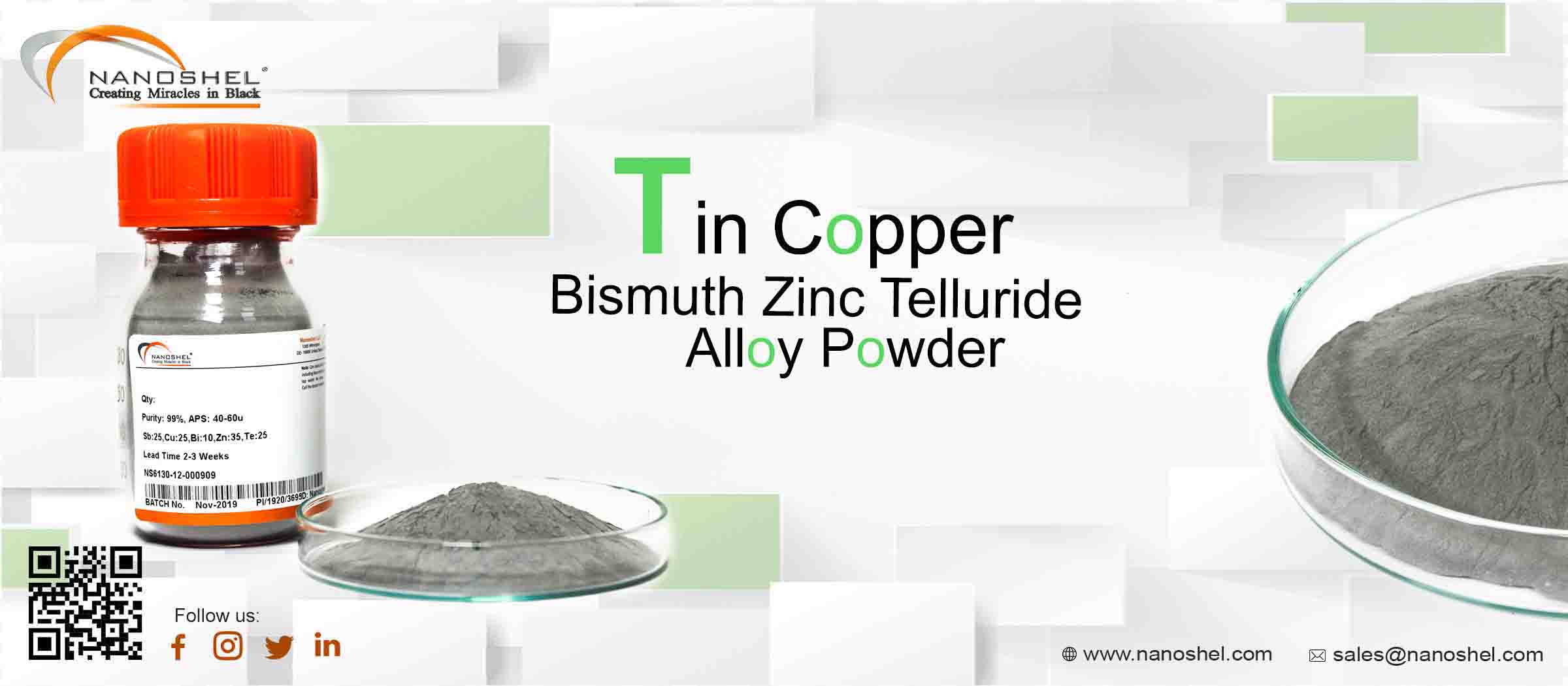Tin Copper Bismuth Zinc Telluride Alloy Powder
SnCuBiZnTe, 99%, APS: 40-60µm
Tin Copper Bismuth Zinc Telluride Alloy Powder
Particles Size Analysis – SbCuBiZn75Te25 Alloy Powder
| Product | Tin Copper Bismuth Zinc Telluride Alloy Powder | |
| Stock No | NS6130-12-000909 | |
| CAS | N/A | Confirm |
| Purity | 99% | Confirm |
| APS | 40-60µm | Confirm |
| Molecular Formula | SnCuBiZnTe | Confirm |
| Molecular Weight | N/A | Confirm |
| Form | Powder | Confirm |
| Color | Black/Gray/Silvery | Confirm |
| Density | N/A | Confirm |
| Melting Point | N/A | Confirm |
| Solubility | Insoluble in water | |
| Quality Control | Each Lot of was tested successfully | |
| Main Inspect Verifier | Manager QC | |
Typical Chemical Analysis
| Sn | 25 % |
| Cu | 25 % |
| Bi | 10 % |
| Zn | 35 % |
| Te | 5 % |
Expert Reviews
Tin Copper Bismuth Zinc Telluride Alloy Powder

Contact Us
From us, you can easily purchase Silver Nano particles as a new generation of Antimicrobials (Ag, Purity: 99.9%, APS: 50–80 nm, Metal basis) at great prices. Place an online order and we will dispatch your order through DHL, FedEx, UPS. You can also request a quote by mailing us at sales@nanoshel.com. We invite you to contact us for further information about our company and our capabilities. At Nanoshel, we look forward to your suggestions and feedback.
Email Us:
sales@nanoshel.comcmg@nanoshel.com
🔆
Follow Us:
Direct Call Us:
USA – Sales/Research
+1 646 470 4911
+1 646 470 4911
UK – Sales/Research
+44 1782 454 144
+44 1782 454 144
Ireland – Sales/Research
+354 71 985 3714
+354 71 985 3714
India – Sales/Research
+91-9779550077
+91-9779238252
+91-9779550077
+91-9779238252
Note:
*Exchanges of materials/products are not permitted. Nanoshel does not offer refunds.
*US Dollar Cheques Not Accepted, Only Bank TT/Credit Cards Accepted
*Exchanges of materials/products are not permitted. Nanoshel does not offer refunds.
*US Dollar Cheques Not Accepted, Only Bank TT/Credit Cards Accepted
